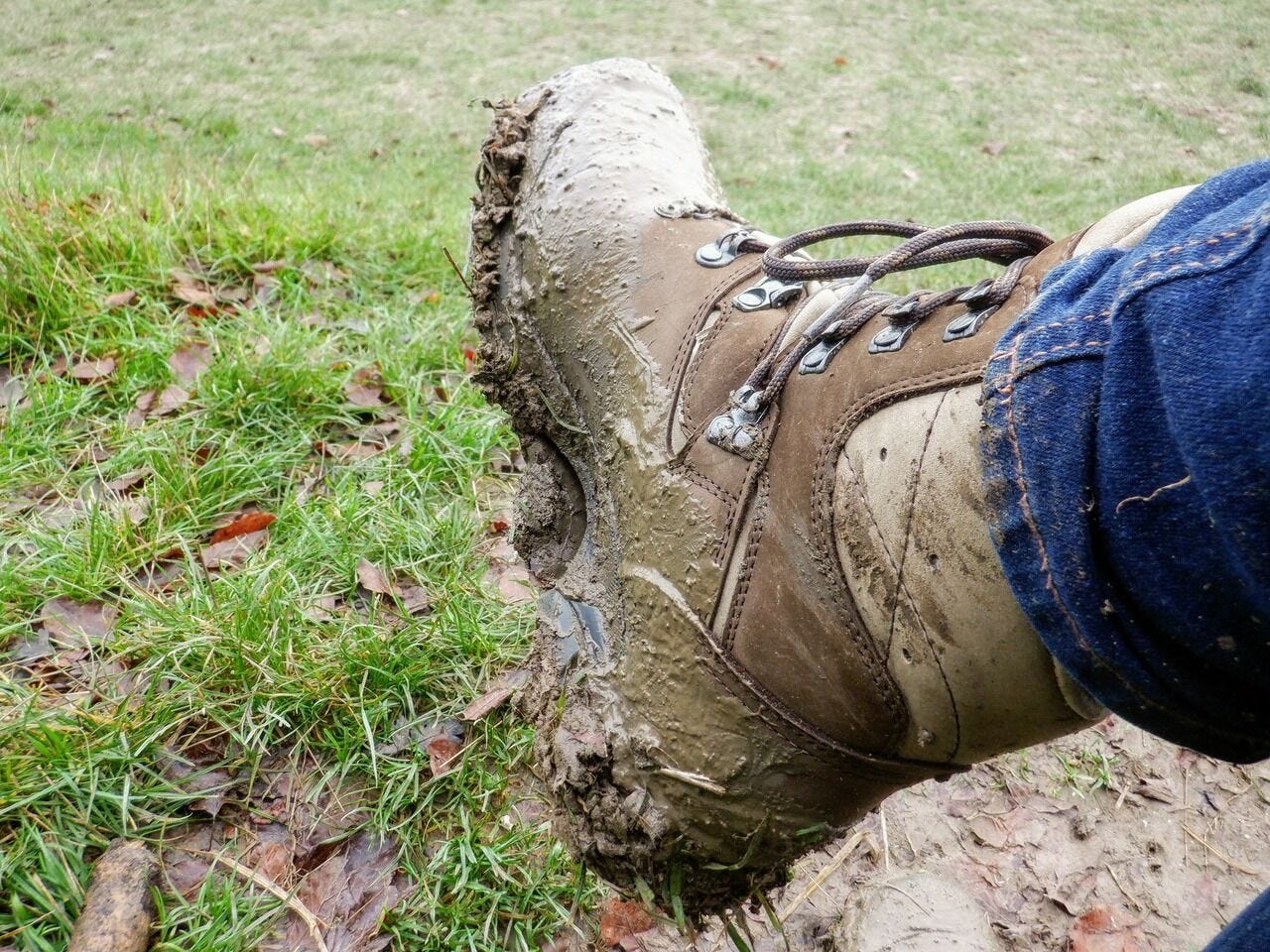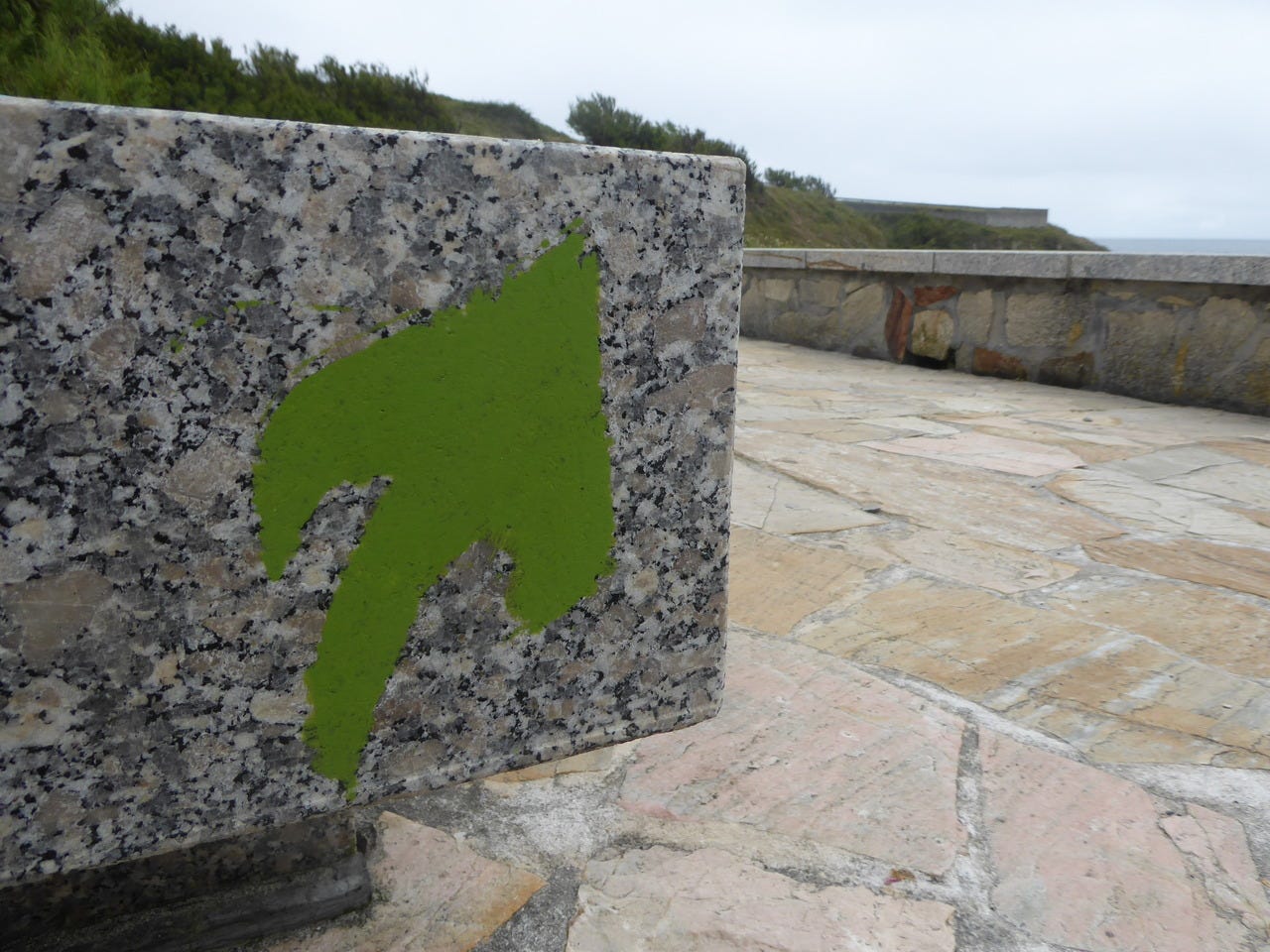Walking for days on end through an inspiring landscape can be a profound and life-altering experience. Millions of people make pilgrimages each year, and it's an experience that should be accessible to us all, regardless of our beliefs or abilities.

In last week's article, we explored the work of preparing yourself for the journey of a lifetime, by understanding your motivations, setting your intentions and building a support community.
This week, we're focusing on the practicalities: choosing a route, getting fit, deciding what to carry with you and understanding the place you’re walking in.
Approaching the path
The first long-distance path I walked was the Ridgeway. In many ways, it was a choice that made itself. I was on the trail of my ancestors, and I wanted to explore how my past was shaping my present. A journey that started in an ancient stone circle and finished, 140 kilometres later, on a hill near my childhood home was perfect for my exploration.
I also wanted to test my limits. I'd wild camped before, and I'd walked long-distances over consecutive days. But I'd never combined the two activities. I planned to walk alone, carrying as little as possible, so I appreciated the security of a bus stop nearby if I needed to quit.
But I knew a more remote walk was on the horizon. For a while, I contemplated the bold adventure of walking the length of Britain, putting the entire island under my feet from north to south. A single conversation helped align my intentions with my path. Whatever else, I had to follow the coast.
A travel feature in a Sunday newspaper caught my eye. The briefest mention of the newly created Camiño dos Faros sparked my imagination as I read about walking the coast of death to the end of the earth. It was an invitation I could not refuse.
Choosing a route

Neither the Ridgeway nor the Camiño dos Faros is a traditional pilgrimage route. But I know now that any hiking trail can be a way to personal transformation if you walk with intention, and with an open heart and mind.
These paths through nature can be especially attractive for those of us who have been scarred by experiences with faith communities, or who have never had a religious affiliation. Walking for many days in nature can open profound insights.
That said, established pilgrim trails offer distinct advantages for those of us who have limited mobility. A winding mountain path can be too demanding, and a well-kept route with regular accommodation and facilities might be an essential choice.
Accessibilitas offers links to a free guide to the Camino Francés, the most popular and accessible of the routes to Santiago de Compostela. Closer to home, the Miles Without Stiles initiative is opening accessible trials across the UK’s national parks.
Explore your options. Find a route that satisfies the longing of your soul while respecting the needs of your body.
Fitness for pilgrimage

Being fit enough to undertake a pilgrimage is always relative to your abilities, your chosen route and how quickly you intend to make progress.
As I approached the Camiño dos Faros, I knew I wanted to walk slowly and stop often, and I felt comfortable undertaking a full day of hiking. My wild camping adventures had given me experience of carrying a backpack, and I bought walking poles to protect my knees on downward slopes. So I thought I was ready. But the rigours of ascending cliffs, sleeping outdoors and waking with leg cramps hit me hard. Some days, I made slow progress, even for me.
Might I have been more physically prepared? Certainly. Many guides to pilgrimage suggest that walkers should be comfortable completing 25 kilometres before setting out, and getting to that level of fitness can take some dedication. So it is important to be realistic. Pilgrimage is physically arduous, and being underprepared can uncomfortably shift your focus from an inspiring trail to your tired legs.
But physical ability needn't be a barrier to pilgrimage. The Spanish organisation DisCamino offers support to disabled pilgrims, and many specialist travel agencies will advise people of every ability about planning and preparing for their journey. Road testing equipment is an essential preparatory step, to ensure mobility aids can withstand varied terrain from cobbled streets to gravel paths. And healthcare professionals, like physiotherapists, can offer advice on pacing strategies and joint care.
The other distinct advantage of established pilgrim trails over remote hiking routes is access to medical services. Especially if you are travelling to another country, it is a useful precaution to carry a translated summary of your conditions and medications, in case the worst happens.
Packing essentials
In preparing to walk the Camiño dos Faros, I decided to travel light. I became hyper focused on ultra light kit. The odd 100g shaved here or there could make a big difference on my back.
I left behind deodorant, figuring that I could cope with my own smells and I was rarely going to be in the company of other humans. I realised I could use my clothes in a dry bag as a pillow at night, so I could save some much needed backpack space. And I carried a small, simple phone that would last for days without being charged.
Nevertheless, some non-essentials were vitally important. I packed my journal, knowing that I wanted to record my journey in as much detail as possible. I also carried a small bag with seven stones, unnecessary for practical purposes, but central to the ritual work I intended to undertake.
On reflection, I didn't need cooking equipment. My lightweight stove and pan were abandoned in the first town I came to, as I realised I could buy coffee and hot meals in cafés and find simpler provisions at local supermarkets. And I never once used my tarpaulin, seeking only the refuge of my bivi bag on rainy nights.
When you're preparing for pilgrimage, packing and repacking your rucksack can become an obsession. There are endless YouTube videos if you want to fall down the hiking kit rabbit hole. But the best advice I heard was to start with the idea that you will walk with nothing at all, then add only what is essential to your survival. For everything else, except in the remotest locations, shops exist.
As for footwear, comfort and durability are non-negotiable. I have severe bunions, and I struggled to find footwear that allowed me to walk pain-free. I had previously spent a lot of money on specialist mountain hiking boots from Hanwag, but they were too heavy and hot for a coastal trail. In the end, I settled on some Merrell walking sandals and cushioned hiking socks. It wasn't a triumph of fashion, but my feet were more important than my pride.
Cultural preparation
When I set off for the Camiño dos Faros, I had a smattering of tourist Spanish and no Galician at all. A few weeks into my journey, I felt immensely proud to ask for directions to a coastal footpath and understand the majority of the answer. I learned the words for lagoons, oak trees and magpies. By the end of my journey, I was finally making sense of train announcements and only occasionally referring to my phrasebook.
My lack of basic conversational skills was socially isolating, and every interaction became a humbling experience as I struggled to convey my meaning. But what I initially perceived as a hindrance, I came to see as a gift. I was undistracted by chatter about football scores, local politics and the price of fish. I could be surrounded by the human world, and simultaneously immersed in my process of change.
I left Galicia still very much an outsider, with only a glancing sense of the culture I had passed through. My understanding and appreciation has deepened in the years since I left and I would love to return one day. But I’ll never again have the experience of being a stranger in a strange land. There was an unexpected freedom in being out of place.
While the landscape may be unfamiliar to you, it is home to countless others. Always remember, you walk as a their guest. So respect the hospitality and welcome that you receive, and return generosity with gratitude.
Journal prompts: Pilgrimage practicalities
All sorts of landscapes comfort, inspire and challenge us. How might your intentions for pilgrimage be shaped by walking through different environments?
Pilgrimage can be physically arduous. What practical steps can you take to nurture and support your body now, so it can sustain you as you travel?
Imagine you are standing at the start of your pilgrim path with absolutely nothing. What is essential for your survival? And what is non-essential, but necessary for your journey?
Cultural immersion can be a contentious topic among tourists, travellers and pilgrims. How important is it for you to understand where you are going before you arrive? And what can you learn from being an outsider?
Next steps
Mastering the logistics of pilgrimage isn’t mundane; getting ready to leave is a sacred act that enables your footsteps. You can never be wholly prepared for what the trail will teach you, but the months of preparation are time well spent.
Next week, in the last part of this series, we’ll explore what you can expect on the pilgrim’s path, and consider how you can prepare for the all-important journey home again.






Dru, thank you for writing such a wonderful substack, not just this article but your whole newsletter on pilgrimages inner journeys and the discovery of what's really important in one's life. I have been really struggling since last November and have stopped writing my own substack as I feel like I lost my way. Your writing is inspiring, encouraging and motivating. Thank you.
Peter